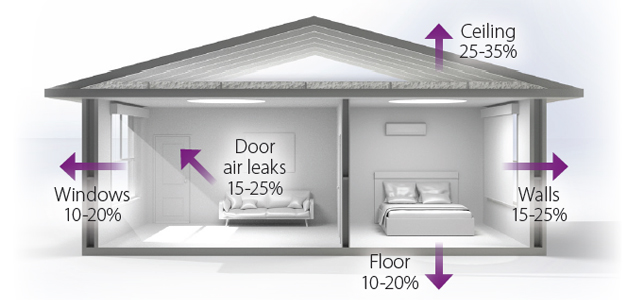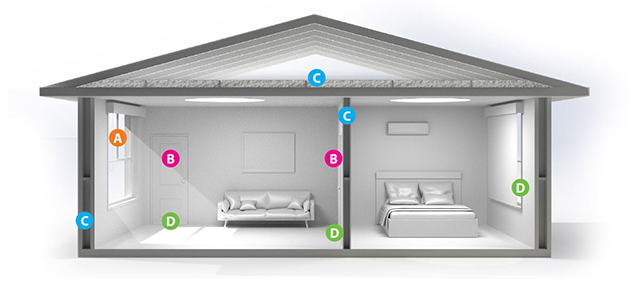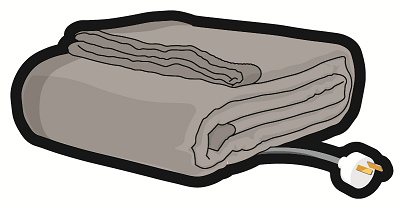Heating and cooling can account for about 40% of your energy use. This page discusses efficient ways to stay warm and comfortable in your home during winter.
Prepare your home
You can reduce how much you rely on heating appliances by making a few simple changes around the house.
Heat loss
A house can lose heat through obvious places like around the windows and doors. But you could also be losing heat through your walls and floor.
Examine where your house could be losing heat. This diagram shows where heat is lost from a typical home.
Insulation
Effective insulation can reduce up to 60% of heat lost through your ceiling and walls.
We recommend that every home be insulated:
- By law, all new homes and additions must have insulation.
- If your home is older, consider topping up or replacing insulation.
- Talk to your landlord about having insulation installed or topped up if you rent.
Make sure your installer has the SA builder’s licence that permits them to install insulation. And ask them about the best R-value for your home and specific needs.
Curtains and pelmets
Up to 20% of your heating can also be lost through your windows. Thick curtains with pelmets can insulate windows and keep rooms warmer.
Warm air cools quickly when it meets a cold window. Pelmets closed at the top help stop air flowing between the curtains and the windows.
Passive heating techniques
A. Let the sunshine into your home
Open curtains and blinds during the day and move any large objects that could be blocking light. Heat will be stored if the sunlight warms a tiled or concrete floor, warming your home into the evening.
B. Only heat the areas you need
Divide your home into sections (or zones) by closing doors, only heating the areas you’re using. For example, heat your living areas during the day but close the doors to your bedrooms.
C. Insulation
Insulation is any material that reduces the amount of heat transferred in and out of your home. It can help keep your home warmer in winter and reduce your need for heating appliances.
Find out more about insulating your home.
D. Draught proofing
Using draught excluders under doors, sealing strips around doors and window frames, and filling gaps can help stop heat escaping.
Household heating tips
Always try to "heat the person, not the room" before turning on your heater.
Start with adding extra layers of clothing, using hot water bottles, wheat bags, or inexpensive electric rugs or blankets.
Other simple changes can also keep you warmer this winter:
- Adjust your heater’s louvres towards the floor, as hot air rises.
- Set your heater’s thermostat to 18°C - 21°C or lower - every degree lower can reduce the running costs by up to 10%.
- Follow the maintenance instructions for your heater and service it regularly.
- Reversible ceiling fans help move warm air around a room. Check if you can change your fan settings to ‘winter’.
Charges on your energy plan
Energy plans can include different charges depending on the time of day - you can be charged a flat rate all day or for the time of use.
Investigate other market offers to see if there is a better contract to suit your needs.
Heating appliances
There are a number of factors to consider when shopping for a new heating appliance.
Choosing your heater
Size of the area heated
- Electric rugs or blankets heat you directly and are efficient for 1 or 2 people who are often idle. For example, watching tv on the lounge or lying in bed for longer periods.
- A small reverse cycle air conditioner is effective if you want to heat a small to medium space, where people are more active.
- Larger zoned heating systems can heat an entire home. You can zone off areas and the cost will depend on how many zones are being used.
Product features and specifics
- Compare the purchase, installation and running costs of the appliance. Also check the its lifespan and warranty.
- Consider gas connection costs if don’t already have a connection to your home.
- Look into convenience features such as timers, child locks and remote controls.
Energy rating labels
Most heaters and coolers have an energy rating label to compare energy use and efficiency.
Larger zoned ratings feature different efficiency ratings, depending on which climate zone an air conditioner is used in (hot, average, or cold).
These ratings help shoppers make meaningful comparisons and allows retailers to promote the best air conditioners for the region.
Compare the estimated running costs of appliances on the Energy Rating website.
Appliance running costs
| Heating appliance | Hourly running costs | Works best in |
|---|---|---|
Heated rug (electric)
| Flat rate 4-6c Time of use 3-4c shoulder 3-5c off-peak 5-7c peak | 1 or 2 people who aren't very active |
Heated blanket (electric)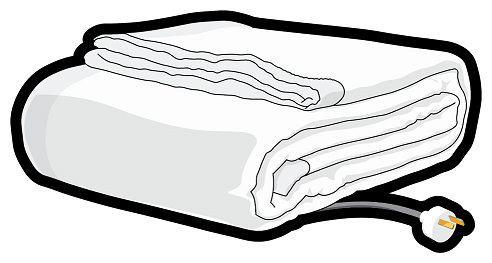 | Flat rate 5-6c Time of use 3-4c shoulder 4-5c off-peak 5-7c peak | 1 or 2 people who aren't very active |
Radiant heater (electric)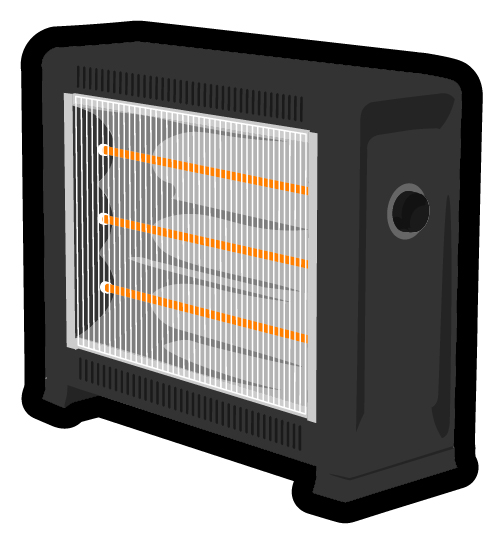 | Flat rate 38-52c Time of use 27-36c shoulder 31-42c off-peak 44-60c peak | 1 or 2 people who aren't very active |
Small reverse cycle air conditioner | Flat rate 10-14c Time of use 7-10c shoulder 8-11c off-peak 12-16c peak | Small room floor space 12m² |
Electric panel heater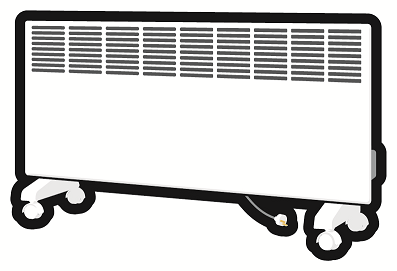 | Flat rate 46-62c Time of use 32-43c shoulder 37-50c off-peak 53-72c peak | Small room floor space 12m² |
Electric portable heater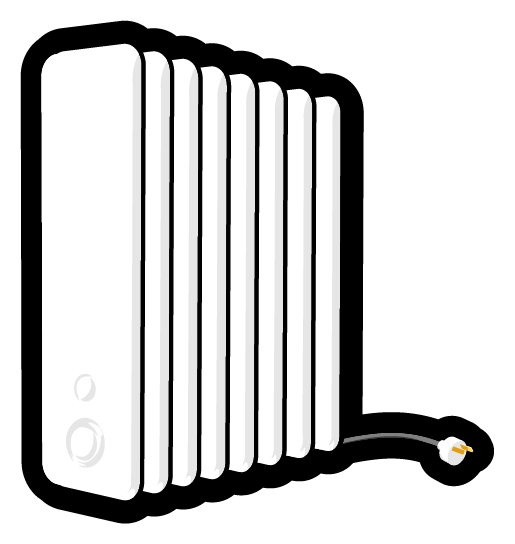 | Flat rate 92c-$1.25 Time of use 64-87c shoulder 74c-$1.00 off-peak $1.06-$1.44 peak | Small room floor space 12m² |
Reverse cycle air conditioner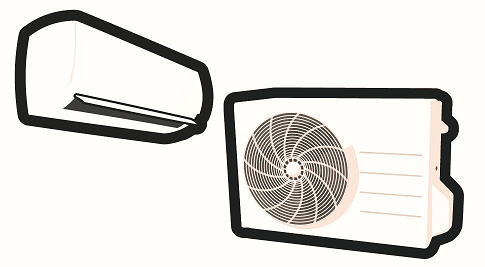 | Flat rate 36-48c Time of use 25-34c shoulder 29-39c off-peak 41-56c peak | Large room floor space 36m² |
Gas heater | Flat rate 48-91c | Large room floor space 36m² |
Small combustion fire | Flat rate 60-82c | Large room floor space 36m² |
Zoned ducted reverse cycle air conditioner | Flat rate $1.44-$1.95 Time of use $1.00-$1.35 shoulder $1.16-$1.57 off-peak $1.66-$2.25 peak | Whole of house floor space 200m² |
Zoned ducted gas heating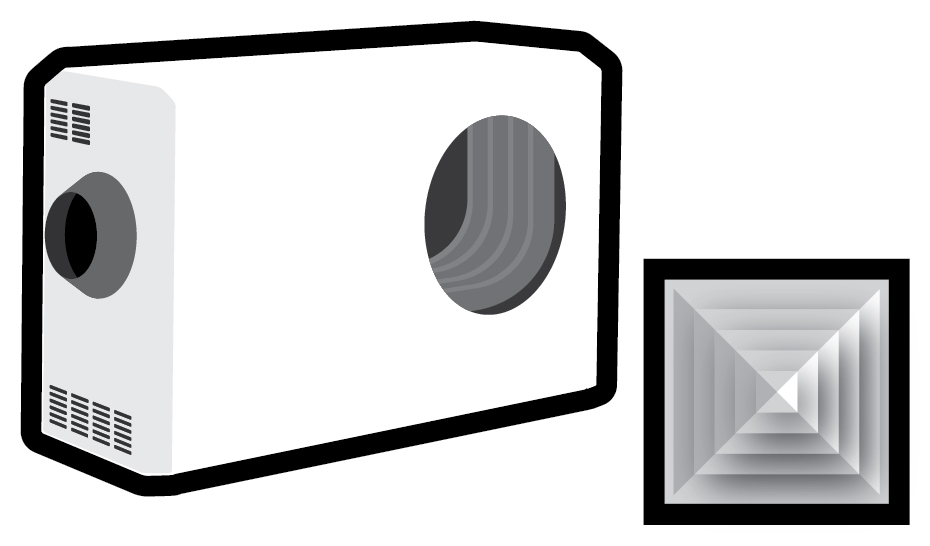 | Flat rate $2.78-$3.05 | Whole of house floor space 200m² |
Running costs are a guide only. Calculations were made at time of publication May 2025. Costs are based on AGL electricity and gas standing offer, which for electricity is generally aligned with the 'Default market offer'.
Contact the Energy Advisory Service for more information - energyadvice@sa.gov.au
